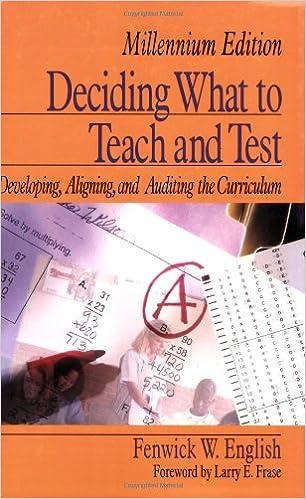Question
It purchases cocoa beans and processes them into two intermediate products: chocolate-powder liquor base and milk-chocolate liquor base. These two intermediate products become separately identifiable
It purchases cocoa beans and processes them into two intermediate products: chocolate-powder liquor base and milk-chocolate liquor base. These two intermediate products become separately identifiable at a single splitoff point. Every 900 pounds of cocoa beans yields 30 gallons of chocolate-powder liquor base and 120 gallons of milk-chocolate liquor base. The chocolate-powder liquor base is further processed into chocolate powder. Every 30 gallons of chocolate-powder liquor base yield 670 pounds of chocolate powder. The milk-chocolate liquor base is further processed into milk chocolate. Every 120 gallons of milk-chocolate liquor base yield 1,090 pounds of milk chocolate.
Cocoa beans processed, 19,800 pounds times
Costs of processing cocoa beans to splitoff point (including purchase of beans), $ 68,000
|
| Production | Sales | Selling Price | Separable Processing Costs | ||||
| Chocolate powder | 14,740 | pounds | 6,700 | pounds | $12 | per pound | $8,975 | |
| Milk chocolate | 23,980 | pounds | 14,500 | pounds | $10 | per pound | $91,095 | |
Creme de Cacao Edibles Factory fully processes both of its intermediate products into chocolate powder or milk chocolate. There is an active market for these intermediate products. In August 2017, Creme de Cacao Edibles Factory could have sold the chocolate-powder liquor base for $ 24 a gallon and the milk-chocolate liquor base for $ 9 a gallon.
Requirement 1. Calculate how the joint costs of
$ 68000 would be allocated between chocolate powder and milk chocolate under the different methods.
a. Sales value at splitoff method. Begin by entering the appropriate amounts to allocate the joint costs. (Round the weighting amounts to four decimal places.)
|
| Sales value of total |
| Joint costs |
|
| production at splitoff | Weighting | allocated |
| Chocolate powder |
|
| |
| Milk chocolate |
|
|
|
| Total |
|
|
b. Allocate the joint costs using the physical measure method. Begin by entering the appropriate amounts to allocate the joint costs. (Round the weighting amounts to four decimal places.)
|
| Physical measure of |
| Joint costs |
|
| total production | Weighting | allocated |
| Chocolate powder |
|
|
|
| Milk chocolate |
|
|
|
| Total |
|
|
|
c. Allocate the joint costs using the net realizable value method. Begin by entering the appropriate amounts to allocate the joint costs. (Round the weighting amounts to four decimal places. Round the joint costs allocated to the nearest whole dollar.)
|
| Net realizable |
| Joint costs |
|
| value | Weighting | allocated |
| Chocolate powder |
|
|
|
| Milk chocolate |
|
|
|
| Total |
|
|
|
d. Constant gross-margin percentage NRV method. Begin by entering the appropriate amounts to allocate the joint costs. (Round the percentage to four decimal places, X.XXXX%.)
| The overall gross-margin percentage for all joint products together is |
| %. |
Now determine the formula to compute the joint costs allocated, then enter the appropriate amounts. (Round your answers to the nearest whole dollar.)
|
| Total production costs | - | Separable processing costs | = | Joint costs allocated |
| Chocolate powder |
| - |
| = |
|
| Milk chocolate |
| - |
| = |
|
Requirement 2. What are the gross-margin percentages of chocolate powder and milk chocolate under each of the methods in requirement 1? (Use parentheses or a minus sign when entering negative amounts. Round the percentages to the nearest hundredth percent, X.XX%.)
|
| Chocolate powder | Milk chocolate | ||
| a. Sales value at splitoff |
| % |
| % |
| b. Physical-measure |
| % |
| % |
| c. NRV |
| % |
| % |
| d. Constant gross-margin percentage NRV |
| % |
| % |
Requirement 3. Could
Cocoa Nibs
Edibles Factory have increased its operating income by a change in its decision to fully process both of its intermediate products? Show your computations. (Use parentheses or a minus sign when entering decreasing amounts.)
Begin by determining the formula to compute the increase/(decrease) in operating income, then enter the appropriate amounts.
|
|
|
|
|
| Increase/(decrease) |
|
| Incremental revenue | - | Separable processing costs | = | in operating income |
| Chocolate powder |
| - |
| = |
|
| Milk chocolate |
| - |
| = |
|
Cocoa Nibs
Edibles Factory could increase operating income if chocolate-powder liquor base is
further processed into chocolate powder
and if milk-chocolate liquor base is
further processed into milk chocolate.
Step by Step Solution
There are 3 Steps involved in it
Step: 1

Get Instant Access to Expert-Tailored Solutions
See step-by-step solutions with expert insights and AI powered tools for academic success
Step: 2

Step: 3

Ace Your Homework with AI
Get the answers you need in no time with our AI-driven, step-by-step assistance
Get Started


